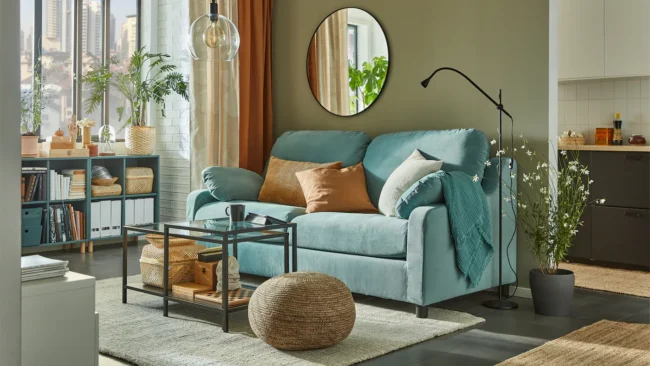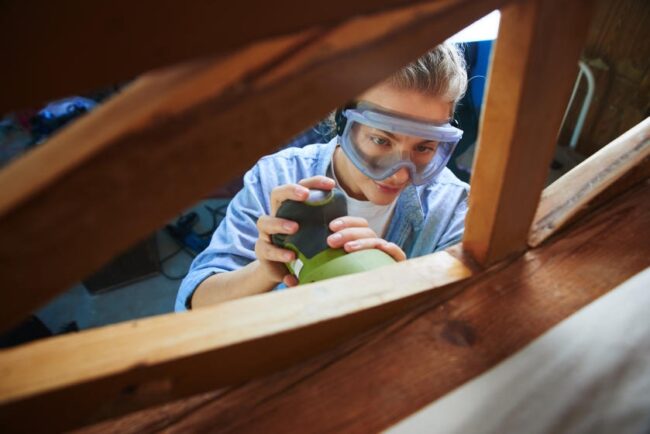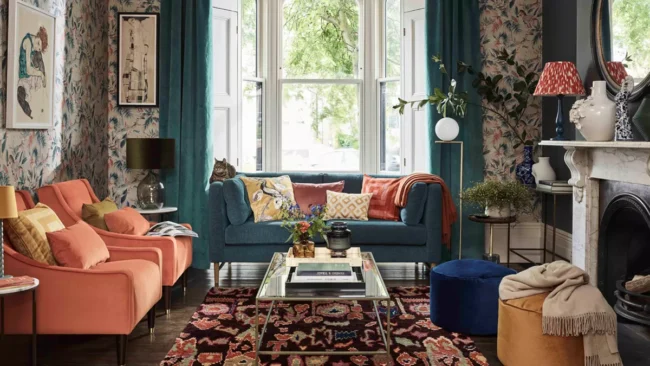Getting bored with the same furniture over a period of time is normal. We often wish to get rid of the old, boring furniture and replace it with a new one. That does give a new look to your living room and pleases your eyes definitely. However, it costs a lot. Therefore, a more reliable and recommended way of giving your living room a new look is to give the furniture a second life. Confused about how this can happen? Don’t worry, we have got you covered! Just follow the below-mentioned tips and tricks to give your living room furniture a second life.
Use slipcovers for the furniture

The first and most convenient tip to give your living room furniture a second life is to use slipcovers. Covering your living room sofas with your favorite slipcovers will give your living room an entirely new look and cost much less as compared to buying a whole new range of furniture for your living room. Depending upon your preferences, mood, and color theme of the living room, you can select your dream slipcovers from a wide range of varieties. The slipcovers can be selected among a diverse range of colors and designs, giving your living room a classy, funky, or neutral look. You can learn more on this site.
Stripping and staining

Stripping and staining is another way of giving your living room furniture a second life. All you need to do is to strip the piece of furniture and paint or stain it, and tadaa… you got new furniture looking as new as the time you bought it. Staining and painting would help bring back the shine of your furniture and give it a great finishing.
Now for stripping, there are two kinds of strippers. The first one is oil-based and the second one water-based. Let’s get to know the difference between both of them so you can choose your preferred one.
Oil-based strippers have a very strong odor. They are toxic and flammable to a great extent. Therefore make sure to use them in an open area or in a place that has a good ventilation system. Also, don’t forget to wear a mask while using oil-based strippers.
On the other hand, water-based strippers are also a good choice, however, they take relatively a long time to work with, which exceeds several hours. Moreover, they are more expensive than oil-based ones. In case you go for water-based strippers, do wear goggles and rubber gloves in order to protect yourself from the spray splatters.
Once you have selected the kind of strippers to get started with, get ready to work. The following steps are generally followed for the process of stripping and staining:
- Take a paintbrush and apply a stripper to the furniture.
- Leave the stripper for the time mentioned by the manufacturers.
- Use a plastic or wood scraper to remove the stripper after the due time is over. Do not use a metal one.
- Clean the scraped surface with the help of fine steel wool. Avoid scrubbing!
- Use a thinner if you feel your furniture needs it, and let it dry.
- Shore up the furniture.
- Now, use a paintbrush to stain or paint the furniture the way you desire!
- Let it dry.
- Smear the painted or stained surface using a lint-free cloth in order to ensure uniformity and let it dry.
- Lastly, apply a thin layer of varnish (maybe several layers of it), either oil-based or water-based, and let it dry.
- Upholstering a chair seat
Upholstering the living room furniture is yet another great way of changing the whole new look of your old furniture. This task is better performed by the specialists, however, if you have taken a course and can follow all steps decorously, you can surely do it yourself!
The foremost step to follow while upholstering a chair seat or any other living room furniture is to select the fabric. Note that cloth that is meant for clothing or draperies is NOT a good fit! It is because it will wear out real quick. So select the fabric wisely.
Once the fabric is selected, upholster the chair seat, keeping in mind to add 2.5 inches of extra fabric inside each side of the chair. Also note that striped, bold, or check patterns require more material as compared to those having small designs or solid ones. Whatever pattern you are following, ensure it matches with the other chairs.
The layering of upholstering is done in the following steps:

- Put on a layer of cotton cloth.
- Lay down the foam rubber.
- Add a layer of the polyester sheet in order to prevent abrasion between the rubber and fabric.
- Lay down the fabric as the last layer
Once the layering is done, pull the fabric tightly and fix it.
DIY and Recycling Materials

This step is the most interesting one, especially if you love DIYs. Being an artist is a plus. It helps generate multiple ideas of doing things your way. DIY and reusing recyclable materials can help add life to your living room. Some of the great ideas to give your living room furniture a second life via DIY and recycling are mentioned next.
- Treat your old furniture, such as a small wooden side table, as a plant holder.
- Reuse the old wooden furniture to create shelves out of them.
- Make storage area with the help of wooden pallets.
- Repaint or restain old chest of drawers or decoration pieces.
- Use single chairs and those with broken legs as flower pots and hangers or bookshelves respectively.
- Make nightstands using broken or destroyed tables.
So these were a few ways in which you can give your living room furniture a second life, that too at very affordable prices. All these ways are worth it and you would definitely enjoy doing them in addition to getting a whole new look of your living room. So what are you waiting for? Get started!
